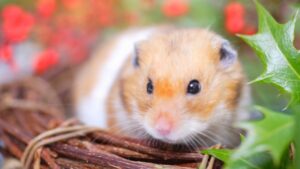
Can You Travel with a Hamster? A Comprehensive Guide
Traveling with a pet hamster isn’t as straightforward as it might seem. It requires careful consideration of your pet’s safety, comfort, and the logistics involved.
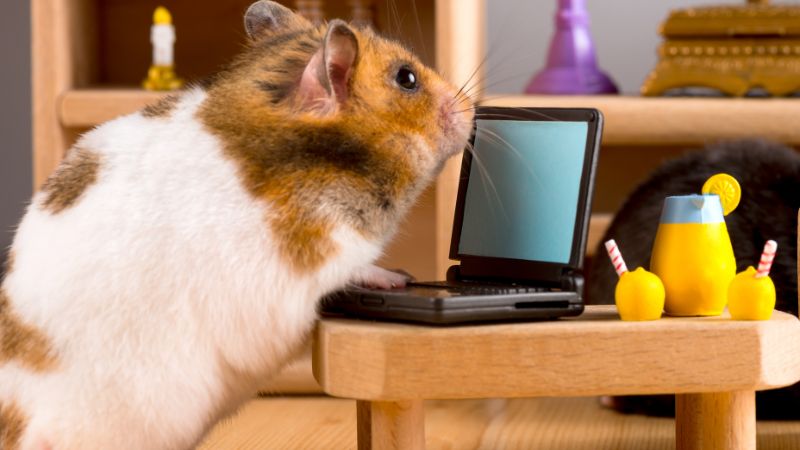
When you bring home a new hamster, you’ll need various things to ensure your pet stays healthy and happy. You’ll require a hamster cage, food, bedding, and chew toys. It’s important to be well-prepared for your new hamster.
We’ve made a checklist that covers all the supplies your hamster needs, including the necessary ones and some extras.
Here’s our list of things you need for your hamster before bringing it home. Once you have all the items listed below, you’re ready!
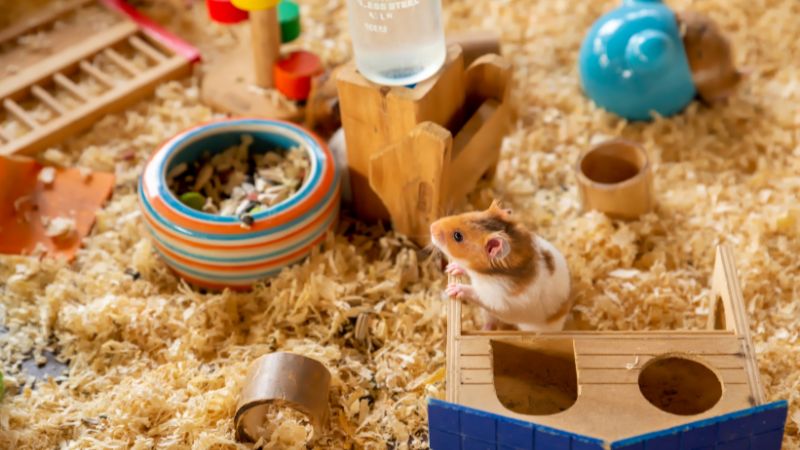
Essentials:
Total estimated cost = $265
Nice-to-have (but not necessary):
While not necessary for your hamster’s basic care, you might find these extra items beneficial for your pet’s comfort and enrichment:
Total estimated cost = $80
Let’s delve into more details about some of the essential hamster supplies, along with tips and potential issues to be aware of.
Choosing the right hamster cage is crucial. It should be spacious enough for your new pet to move around and have fun. If you plan to have multiple dwarf hamsters in one cage, you’ll need a slightly larger cage to accommodate them.
Important Tip: If you’re keeping dwarf hamsters, be cautious with wire-top cages (shown below). Sometimes, the gaps between the metal wires can be too wide, and dwarf hamsters might squeeze through them! Look for a cage with gaps that are about 1cm wide.
The Woodhamstercage – our top pick
Price: $169.99
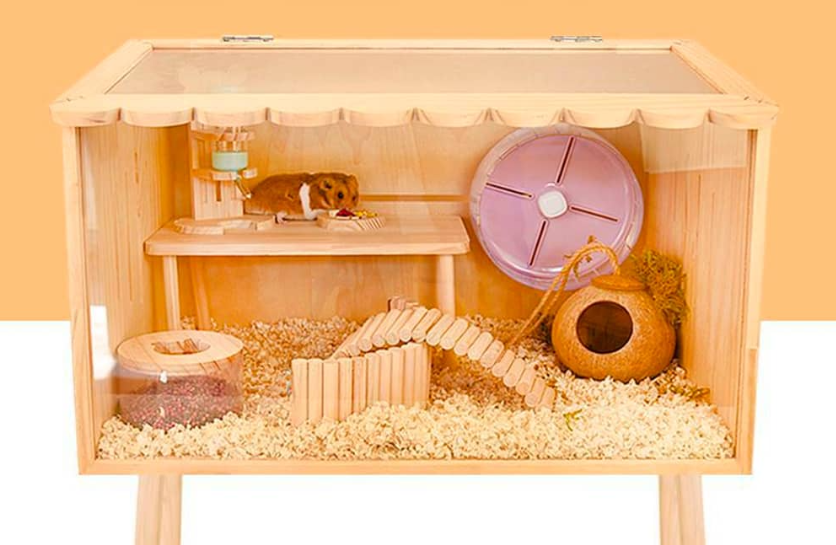
This is likely the finest hamster cage available right now. It offers ample space for your hamster to roam and can accommodate a small group of Robos. It comes with many accessories, is simple to put together, and is easy to clean – Know more information about the wood hamster cage
Prevue Pet Products 528– often recommended by hamster owners
Price: $165.5
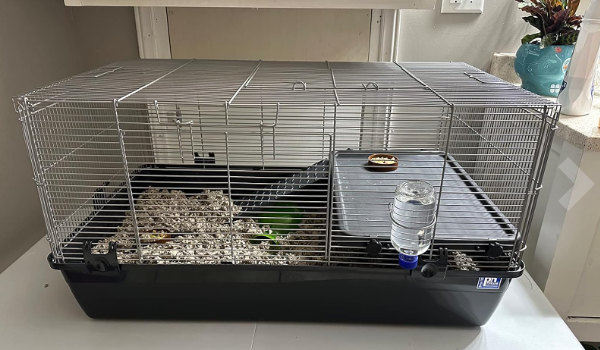
This hamster cage is a recommended one with a deep base for natural burrowing, multi-level design for exercise, easy access for cleaning, durable construction, good ventilation, and dimensions of approximately 32.5 x 19 x 17.5 inches, making it a versatile choice for hamster owners.
There are several types of hamsters, and they come in different sizes with varying care needs. If you plan to have two or more hamsters, you should go for a dwarf hamster species. Syrian hamsters, which are larger, need to be kept alone.
Dwarf hamsters are often more active and fun to watch, although they can be a bit more challenging to handle (but practice helps).
Here are the different hamster options you can consider:
Substrate is the stuff you put on the bottom of your hamster’s cage. It’s usually made of wood shavings or soft materials like CareFresh. Substrate keeps the cage clean, soaks up smells and waste, and gives your pet a comfy surface.
Hamster bedding is what your hamster uses to make a cozy place to sleep. It’s usually softer than substrate and is kept in the hamster’s home or hideout inside the cage.
There are many different types of substrate and bedding, but avoid using sawdust because it can make your pet’s breathing hard due to the dust it makes. We suggest using trusted brands and choosing wood shavings for the substrate and CareFresh for bedding.

Having food bowls and water bottles in your cage is really important. A food bowl lets your hamster know where it can always find food, and your hamster might even wait near it when it’s almost mealtime!
If you have more than one hamster, feeding time can sometimes lead to fights. That’s why it’s a good idea to have a few food bowls because hamsters can get pretty protective of their food. You should also get a water bottle that you can attach to the cage because your hamster needs fresh water every day.
Choosing hamster toys can be tricky because there are lots to choose from! It’s a good idea to get a mix of toys for your pet. You can switch them out to keep your hamster entertained and curious about its environment.
Here are some toys we suggest getting:
An exercise wheel
An exercise ball
A climbing frame (hamsters enjoy climbing!)
Swings
Ladders
Tunnels
Balls
Chew toys
Exercise is really important for hamsters. In the wild, they run for long distances every night! Allowing your hamster to get some exercise on a wheel or a flying saucer helps keep them happy and healthy.
Most hamster owners prefer exercise wheels over saucers because they let hamsters run more naturally. But make sure your pet’s back doesn’t curve when it runs, as that means the wheel is too small. Also, be careful with wheels that have small spaces or holes, as some hamsters can get stuck in them. It’s best to avoid those if you can.
An exercise ball lets your hamster run and explore an entire room without any limits! Hamster balls are awesome because they let your pet burn off energy and satisfy its natural curiosity.
These balls also come in handy when it’s time to clean your hamster’s cage every week. Just put your hamster in the ball, make sure the lid is locked, and you can clean the cage without worrying about your hamster getting in your way.
For cleaning, you’ll want to use a disinfectant spray that’s safe for animals to get rid of any harmful bacteria. You can find these sprays in most pet stores or choose from good options available on Amazon.
Before bringing a new hamster home, make sure you have enough food and treats ready. The best way to feed your hamster is with a healthy hamster mix for daily meals, and you can give them occasional treats.
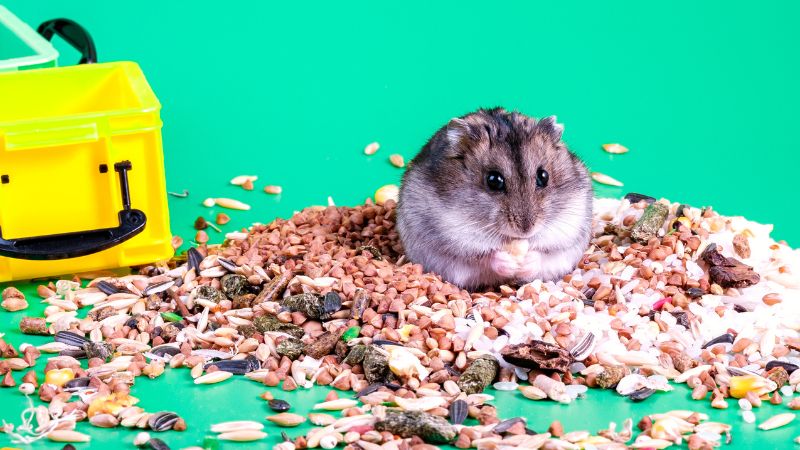
You should provide about a tablespoon of hamster food per hamster per day. You can also add fresh fruits and vegetables to their diet, and some hamsters can even eat mealworms!
Important Note: Be cautious with high-sugar treats, especially for dwarf hamsters, as they are prone to diabetes.
A hamster travel cage, also known as a carry cage, can be handy if you need to move your hamster frequently or if you plan to relocate. It’s also useful when taking your hamster to the vet, as it’s more convenient than carrying a big cage.
While it’s not a must-have for a new hamster, you might consider getting one when you find the need.
Even though hamsters groom themselves regularly and don’t need regular baths, they really enjoy a sand bath! A sand bath is a small container where your hamster can roll around to clean its fur. It’s quite amusing to watch! While not essential for your pet, your hamster will appreciate an occasional sand bath if you can provide one.
In the wild, hamsters live in narrow burrows on the desert floor. These burrows can have many entrances and become quite intricate as a hamster grows. Having tubes in your hamster’s cage can replicate this natural behavior and make your pet feel more comfortable in its new surroundings.
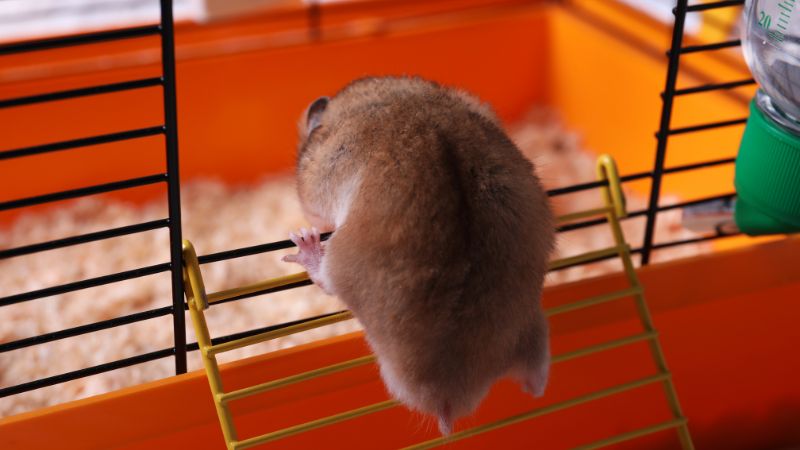
Hamsters are excellent climbers by nature, and they enjoy having a small climbing frame in their cage to play on. Chinese hamsters, in particular, are skilled climbers thanks to their long tails.
Tips: How to make hamster toys at home?
Here are some simple, safe ideas for DIY hamster toys:
We’ve covered all the best supplies for a new hamster, but it’s also important to know what items to avoid for the well-being of your pet. Here’s a list of common hamster products that you should steer clear of due to potential health, injury, or other concerns that could affect your hamster’s quality of life:
We hope our checklist has been helpful, and you now have a clear idea of the hamster supplies you need to create a perfect home for your new furry friend! Feel free to explore our other posts below, and don’t hesitate to reach out if you have any questions.


Traveling with a pet hamster isn’t as straightforward as it might seem. It requires careful consideration of your pet’s safety, comfort, and the logistics involved.
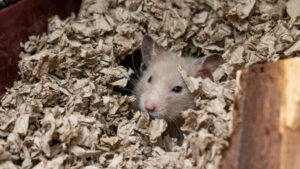
Finding the best hamster cage for Syrian hamster is crucial, as these curious, low-maintenance, and independent pets thrive in the right environment. The primary concern

When I began, the task of selecting essentials for a natural hamster habitat was daunting. To ease this process, I’ve assembled an exclusive set of

Have you ever wondered, “Are hamsters happier in bigger cages?” Generally YES. It’s a question that might seem straightforward, but there’s more to it than
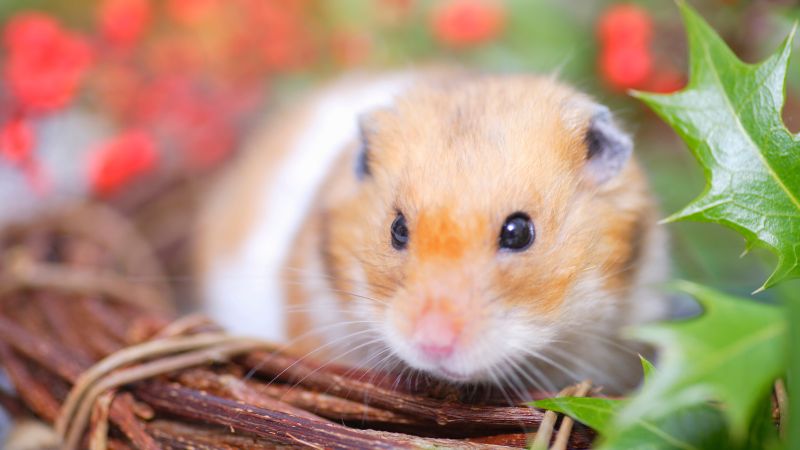
Traveling with a pet hamster isn’t as straightforward as it might seem. It requires careful consideration of your pet’s safety, comfort, and the logistics involved.
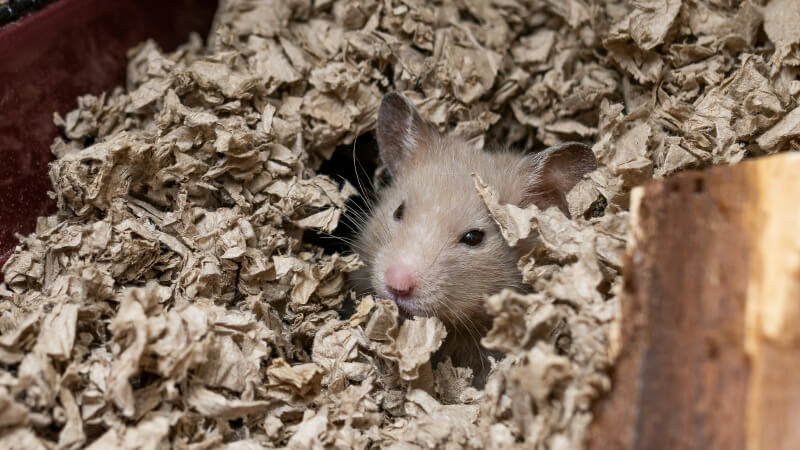
Finding the best hamster cage for Syrian hamster is crucial, as these curious, low-maintenance, and independent pets thrive in the right environment. The primary concern
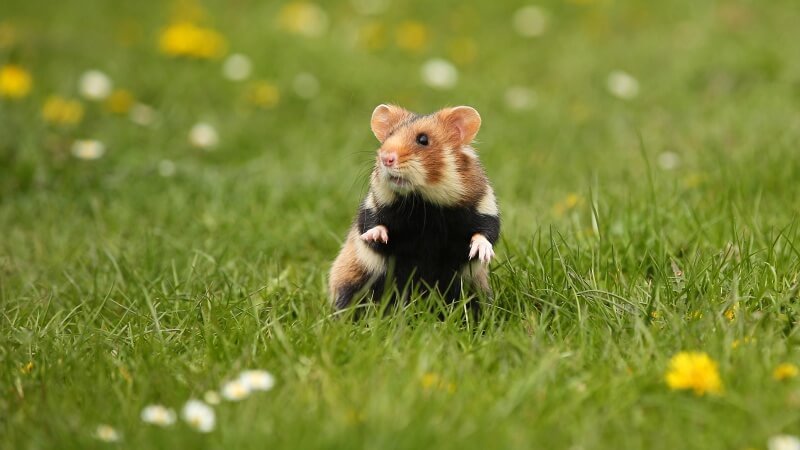
When I began, the task of selecting essentials for a natural hamster habitat was daunting. To ease this process, I’ve assembled an exclusive set of

Have you ever wondered, “Are hamsters happier in bigger cages?” Generally YES. It’s a question that might seem straightforward, but there’s more to it than